
views
X
Expert Source
Alina Goldenberg MD, MAS, FAADBoard Certified Dermatologist
Expert Interview. 18 August 2021.
While there are a lot of misconceptions about what Vaseline is and isn't good for, learning when it's appropriate and when it's inappropriate to use Vaseline will make sure you get all the benefits and none of the drawbacks of using this product. Learn how to incorporate Vaseline into your beauty routine, into your household chores, and when to avoid Vaseline and find a different product instead.
Use Vaseline to soften rough skin.

Vaseline locks in moisture on dry skin. You can use Vaseline as a spot-treatment for dry skin, especially during winter, helping to protect skin exposed to adverse weather conditions. Apply Vaseline to your elbows or knees to help moisturize the skin and rid the areas of any ashy texture or appearance. If you have calluses or rough spots on your feet, apply a thin coat of Vaseline at night then slip on some clean socks. Your feet should feel a bit softer the next morning. Apply a small amount on dry spots on your body before fake tanning lotions are applied. This will help to prevent uneven tanning. Use Vaseline after shaving. It can be used to smooth and soothe clean, freshly shaven skin. Apply vaseline overnight on areas prone to inflammation such as those with eczema or psoriasis.
Apply Vaseline to highlight around your eyes
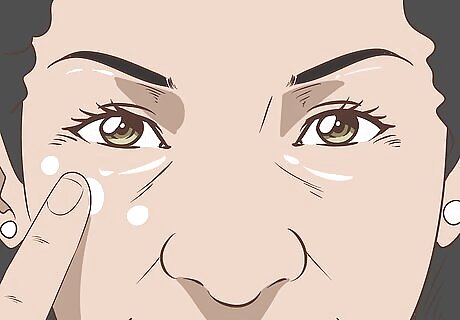
The shine in Vaseline helps bring out your eyes. Used alone or in tandem with makeup, Vaseline is a commonly-used and cheap product to highlight the natural beauty of your eyes. As long as you’re very careful to avoid getting Vaseline into your eyes, Vaseline is perfectly safe. Use a touch of Vaseline mixed with powder eyeshadow pigment to make new colors. Or, use it for a more solid eyeshadow that won’t get all over your face when you put it on. Some people like to apply Vaseline under eye shadow to create a shiny effect. Vaseline can be used to tame unruly eyebrows, by brushing a small amount across them. Similarly, you can use Vaseline to define your lashes and leave them with a glossy and waterproof look. Apply a thin coat to your eyelashes before you go to bed. While unproven, many people think that Vaseline may help your eyelashes grow longer and thicker over time.
Rub Vaseline on your nails.
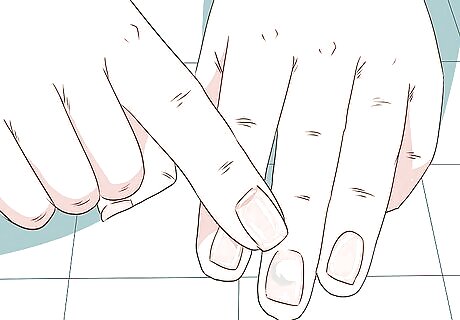
Vaseline softens cuticles so they look better. Vaseline is often used as part of a manicure, to help make the cuticles pliable for tending back. It's an excellent way of caring for your fingertips. Make your week-old nail polish look new again by rubbing a small dab over the polish, helping to restore the glisten and shine.
Put Vaseline on your lips.
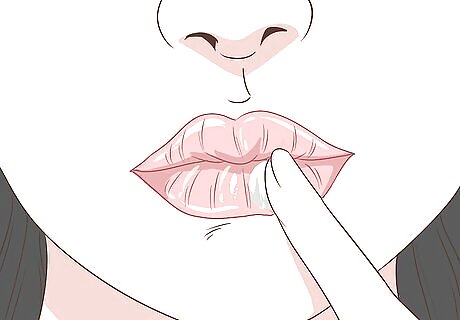
In cold or dry weather, Vaseline prevents chapped lips. Rub a very small layer of Vaseline on your lips to help retain moisture and keep them from drying out. Some people like to apply Vaseline before scrubbing lips with a toothbrush to exfoliate and leave them feeling smooth.
Apply Vaseline on your teeth.
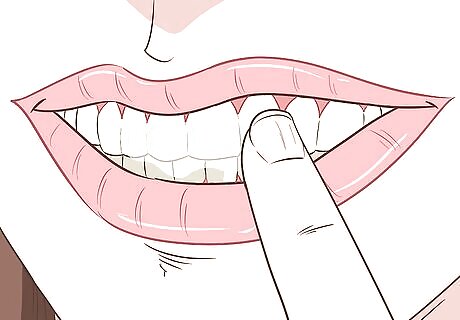
Vaseline prevents your lips from sticking to your teeth. While it may seem odd, applying Vaseline to the teeth is an old stage-hand trick, used to get dancers and other performers more confident and enthusiastic about grinning. and is a common preventative measure taken when applying lipstick. Done correctly, Vaseline can help avoid getting lipstick on the teeth. Use caution and only apply a very small amount of Vaseline to your teeth. Nobody wants a mouthful of Vaseline.
Use Vaseline on your hair.

Vaseline manages hair, locks in moisture, and treats dry scalp issues. You want to use Vaseline sparingly, since it's very difficult to wash out, but it can be an effective treatment in some cases. Use Vaseline to reduce scaling and itching associated with dandruff. Condition the scalp with Vaseline pre-shampooing, massaging it gently into your scalp before a shower. Use Vaseline as a mask around the hairline when dyeing hair. It can protect against harmful hair dyeing, perming and straightening chemicals. In a pinch, a very small dab of Vaseline can be used in place of mousse or styling gel. Smear a tiny bit on your hands and scrunch through your hair for a choppy look.
Apply Vaseline to rashes caused by chafing.

Vaseline helps you move without rubbing or irritation. One of the most common and effective uses of Vaseline is in helping to prevent chaffing-related rashes or irritation caused by clothes. Runners and cyclists will often apply a small amount of Vaseline to the insides of the thighs to avoid chaffing during a long race. Some people struggle with nipple chaffing caused by certain articles of clothing or varieties of fabric. If you have a problem with chaffing, apply a preventative coat of Vaseline to the area to keep yourself moving.
Treat a cough with Vaseline.

Take off your shirt and apply some Vaseline to your bare chest. Make sure you apply enough to cover your entire chest. Wait for the Vaseline to dry before putting your shirt back on. This should help to clear your chest and allow you to breathe better.
Use Vaseline to ease off stuck-on rings.

Vaseline works great as a lubricant. Apply a small dollop around the edges of the ring and twist it as you work. It'll pop right off. Some people will regularly lubricate ear lobes with Vaseline. The use of Vaseline helps to make earring insertion easy and painless.
Shine your shoes and bags.
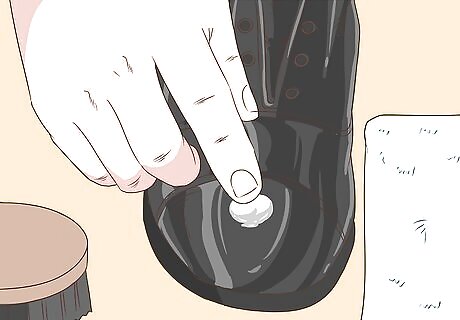
Vaseline is an easy and cheap way to restore shine. Using a very tiny amount of Vaseline on glossy shoes, purses, and other surfaces can help the texture of those surfaces. Just work the Vaseline into the surface until it looks smooth and shiny.
Apply Vaseline on carved pumpkins.

Vaseline prevents the pumpkin from rotting. Apply a small amount of Vaseline to the edges. Once you carve your Halloween pumpkin, rub Vaseline on the exposed edges to keep the carved pumpkin from rotting or going dry. It'll still dry out eventually, but you can slow down the process considerably with a bit of well-placed Vaseline. Avoid using Vaseline on wood, which will serve to dry it out over time.
Lubricate moving parts.

Grease wheels and squeaky doors with Vaseline so they operate better. Lubricate door hinges, sticky zippers, and the moving parts in mechanical toys to keep them working properly. While oil-based lubricant like Vaseline can attract dirt and dust, it's an exceptionally great household lubricant for a variety of purposes. Keep some in your workshop or tool drawer for a quick spot-treatment. Rub Vaseline on the neck of your nail polish bottles and they won’t get stuck to the caps. Vaseline helps to create a barrier between the bottle and the polish, keeping it from forming a crust or gunking up.
Use Vaseline for pet-care.

Vaseline is a common home remedy for a variety of cat and dog related afflictions. Always talk to your veterinarian about proper products and approaches to dealing with serious issues, and ask if small amounts of Vaseline are appropriate. Use Vaseline to help ease hairballs in cats. Feeding cats a very tiny dab of Vaseline can help to relieve hairball symptoms, making them pass it quickly and easily. It's a common use treatment. Apply to the cracked pads of dogs paws to help soften their skin. In the winter, dogs foot pads tend to get dried out, especially if they're walking frequently on the concrete. If this happens, it can be uncomfortable and painful for the dog. Gently massage a small amount of Vaseline into their pads and keep them from licking it off.
Use Vaseline to avoid battery corrosion.
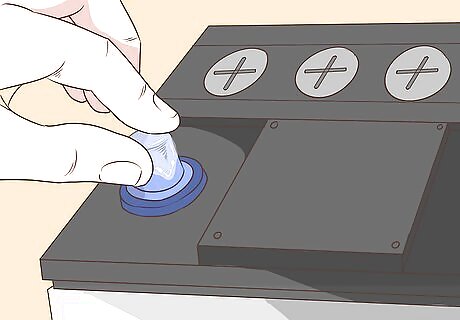
Vaseline protects battery terminals from rusting. Many different household batteries, in the car and in appliances, are susceptible to leaks and corrosion over time, which can be quite dangerous and shorten the life of the batteries themselves. Avoid getting your battery terminals gunked up with corrosion by applying a small dab of Vaseline every time you change the battery. If you've just cleaned battery corrosion from the terminals in the car, lubricate them with Vaseline before you reinstall the battery.
Avoid Vaseline on burns.

Vaseline has no properties that make it an effective treatment of burns. It's a common misconception that Vaseline can and should be used as an analgesic or antiseptic. In fact, the moisture-barrier component of Vaseline makes it a poor choice to apply to fresh burns, cuts, and abrasions. Vaseline does make a variety of different Intensive Care lotions which would be appropriate to use on burns. Lubriderm and other varieties of lotion would be more appropriate.
Use caution for Vaseline as a personal lubricant
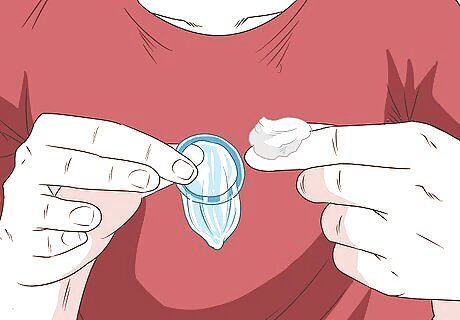
Vaseline could dissolve latex condoms. It's never appropriate to use Vaseline in tandem with latex condoms since it increases the chances of a condom breaking. Always use water-soluble lubricants with latex condoms. Vaseline is commonly used as a sexual lubricant, and isn’t strictly-speaking “harmful.” Some enjoy the difference in texture and the feel of Vaseline. It is extremely difficult to clean, however, making it less desirable in many ways than water-based lubricants or other natural oils, like coconut.
Do not use Vaseline on new tattoos.

Vaseline draws ink from fresh tattoos and clogs your pores. It's another very common misconception that tattoo artists will use and recommend that new tattoos be treated with Vaseline. This is false since it increases the chances of a breakout that can ruin the new ink, and will not work to promote the healing of the tattoo. Instead, use A&D, Bacitracin, or specialty products like TattooGoo, which help to moisturize the area and promote healing. Always ask your tattoo artist for directions regarding aftercare.
Do not use Vaseline for acne or rosacea.
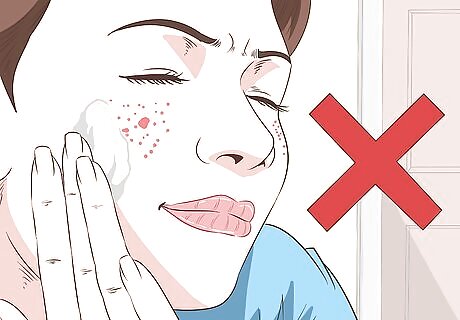
Vaseline is not water-soluble, so it can trap oils in your skin. Vaseline actually seals the skin and dries it out, locking in dirt and suffocating the pores, but creates the appearance of moisturizing because it softens and reduces chafing.
Do not use Vaseline as a moisturizer.
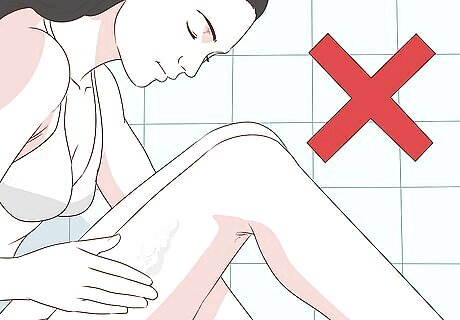
While Vaseline locks in moisture, it doesn’t add moisture to your skin. If you’ve been recommended to use a moisturizer by a dermatologist, use a moisturizing lotion, not Vaseline. In fact, Vaseline creates a moisture barrier that keeps your skin from being able to breathe, which can exacerbate your skin problems.
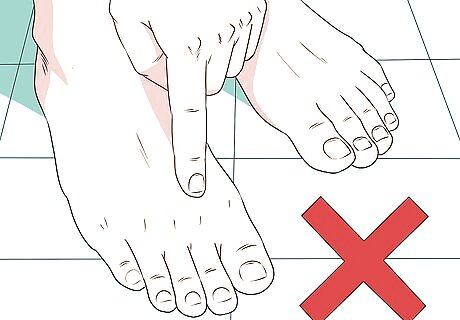
Do not use Vaseline as an antifungal. Vaseline locks in moisture, making it extremely ineffective at battling fungus. Instead, use something that has actual anti-fungal properties, like coconut oil. Dr. Anjali Mahto Dr. Anjali Mahto, Dermatologist While petroleum jelly can provide an effective occlusive barrier, it lacks humectant properties to attract moisture. For extremely dry skin, combine Vaseline with a humectant like glycerin or hyaluronic acid serum underneath to pull water into the skin and seal it in. This provides superior hydration. Vaseline on its own simply traps existing moisture.


















Comments
0 comment